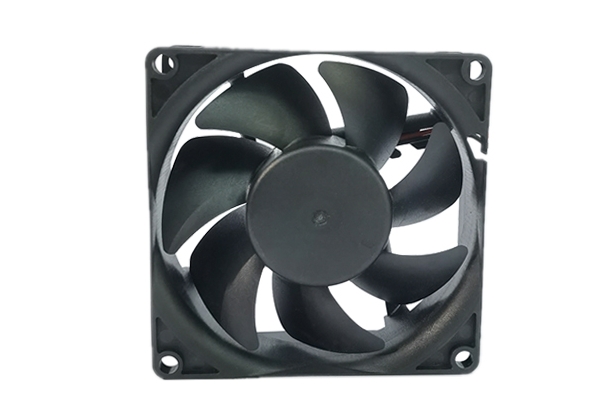Time:2024-07-12 Views:1
DC Axial fans are commonly used in various industries for cooling and ventilation purposes due to their simple design and efficient airflow characteristics. In this article, we will delve into the advantages and disadvantages of axial fans, shedding light on their functionality and potential drawbacks.
Advantages of Axial Fans
Efficient Airflow Generation: One of the primary advantages of axial fans is their ability to generate a significant volume of airflow efficiently. By using a simple yet effective design, axial fans can move large quantities of air with relatively low power consumption, making them energy-efficient solutions for cooling applications.
Compact and Space-Saving Design: Axial fans feature a compact and space-saving design, making them ideal for installations where space is limited. Their streamlined construction allows for easy integration into various systems and equipment without occupying excessive space, maximizing utilization efficiency.
Cost-Effectiveness: Compared to other types of fans, axial fans are often more cost-effective to manufacture and operate. Their straightforward design and construction contribute to lower production costs, making them a budget-friendly cooling solution for a wide range of applications without compromising performance.
Versatility and Customization Options: Axial fans offer versatility and customization options to suit specific airflow requirements and application needs. They are available in various sizes, speeds, and configurations, allowing for flexibility in design and implementation. Whether it's cooling electronics, ventilation systems, or industrial processes, axial fans can be tailored to meet diverse requirements effectively.
Easy Installation and Maintenance: Axial fans are designed for ease of installation and maintenance, minimizing downtime and reducing overall operational costs. Their simple construction and modular components facilitate quick and hassle-free installation, while routine maintenance tasks such as cleaning and lubrication can be performed with minimal effort.
Wide Range of Applications: Axial fans find applications across a wide range of industries and environments, including electronics cooling, HVAC systems, automotive cooling, industrial processes, and more. Their versatility and reliability make them indispensable in maintaining optimal operating conditions and ensuring the longevity of equipment and systems.

Disadvantages of Axial Fans:
While axial fans offer numerous advantages, it's essential to recognize their limitations and potential drawbacks:
Limited Static Pressure: One of the primary drawbacks of axial fans is their limited ability to generate static pressure. Unlike centrifugal fans, which excel in high-pressure applications, axial fans are better suited for low-pressure environments. This limitation can impact their effectiveness in situations requiring airflow against resistance, such as ducted systems or systems with restrictive airflow paths.
Directional Airflow: Axial fans produce airflow in a single direction, which may not always be suitable for applications requiring directional control or uniform distribution of air. In scenarios where airflow needs to be directed precisely or distributed evenly across a space, additional components such as ducting or diffusers may be necessary to achieve the desired airflow pattern.
Noise Levels: Axial fans can generate considerable noise, especially at higher speeds. This noise can be disruptive in quiet environments or residential settings, leading to potential discomfort or annoyance for occupants. While noise-reduction measures such as acoustic enclosures or vibration dampening can help mitigate this issue, they may add complexity and cost to the overall system.
Limited Cooling Capacity: While axial fans are effective for general-purpose cooling, they may not always meet the requirements of applications with specific cooling needs or high-heat-density components. In such cases, more specialized cooling solutions, such as liquid cooling systems or centrifugal fans, may be necessary to achieve optimal thermal management and temperature control.
Efficiency at Higher Pressures: Axial fans tend to experience decreased efficiency at higher pressures compared to centrifugal fans. This can result in reduced airflow performance and increased energy consumption in applications where the fan needs to overcome resistance or deliver airflow over long distances. As a result, careful consideration of the operating conditions and airflow requirements is essential when selecting axial fans for such applications.
In conclusion, axial fans offer numerous advantages, including efficient airflow, compact design, cost-effectiveness, and versatility. However, they also have some disadvantages, such as limited static pressure, directional airflow, noise levels, and limited cooling capacity. When selecting a cooling solution, it's essential to consider the specific requirements of the application and weigh the pros and cons of axial fans against other available options. As a leading manufacturer of DC axial fans, we are committed to providing high-quality cooling solutions tailored to meet the diverse needs of our customers.